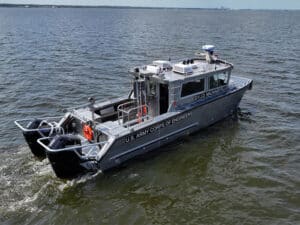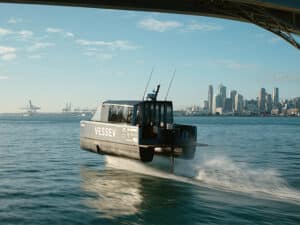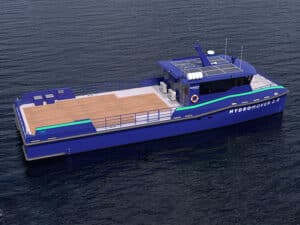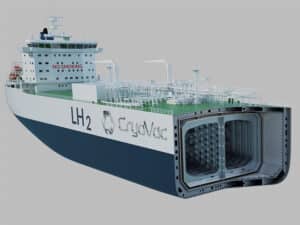
Contract signed for first Chinese-built engine of MAN B&W G80 design
Written by Nick Blenkey A ceremony at the CSSC-MES Diesel Co., Ltd. (CMD), Shangai, saw the signing of the contract to construct the first Chinese-built MAN B&W design Green Series 7G80ME-C9.2 engine. Due for delivery in June 2013, the engine is bound for a 319,000 dwt, ABS class VLCC to be built by Shanghai Waigaoqiao Shipbuilding Co., Ltd. (SWS) for Maran Tankers of Greece.
A ceremony at the CSSC-MES Diesel Co., Ltd. (CMD), Shangai, saw the signing of the contract to construct the first Chinese-built MAN B&W design Green Series 7G80ME-C9.2 engine. Due for delivery in June 2013, the engine is bound for a 319,000 dwt, ABS class VLCC to be built by Shanghai Waigaoqiao Shipbuilding Co., Ltd. (SWS) for Maran Tankers of Greece.
The G-series engine is hallmarked by its SFOC, energy efficiency and ability to meet all Tier II criteria.
In his speech at the ceremony, Qin Wenquan, Chairman of CMD, described the 7G80ME-C9.2 engine – rated at 31,150 kW – as “a new, green, marine diesel engine with an ultra-long-stroke and lower speed that follow the design principles of the Mark 9 engine series.”
“The G-type engine is a realization of the most advanced technology, offering advantages in fuel consumption, exhaust emission and energy efficiency,” he said, adding that the order for the 7G80ME-C9.2 engine – the first such order in China – showcases CMD’s ability to build large-bore, low-speed diesel engines.
Mr. Qin noted that, comparing a MAN B&W 7S80ME-C9.2 engine and a G80 engine installed aboard a 319,000-dwt VLCC, the G80 engine has a greater efficiency of 1 percent. Assuming optimum running conditions, including an optimum propeller set-up, propeller efficiency can be improved by about 3.6 percent. Under the same ship-speed conditions, overall running costs can thus be reduced by 4.6 percent, a significant savings that MAN Diesel & Turbo figures suggest can even be bettered, depending on individual circumstances.
Under the same ship-speed conditions, the EEDI would be reduced by some 8.2 percent when using the G80 as opposed to the S80 engine. Mr. Qin concluded that the G80ME-C9.2 engine meets the demands of high efficiency ships, ensuring that it will eventually become the natural choice for VLCC vessels.
Goetz Kassing, Managing Director of MAN Diesel & Turbo, China, supported this analysis, observing that the G80’s longer stroke results in a lower rpm for the engine driving the propeller: a reduction from 78 rpm for the S80 engine to 68 rpm for the G80. The lower optimum engine speed allows the use of a larger propeller. This, ultimately, is significantly more efficient in terms of engine propulsion and, together with an optimized engine design, reduces fuel consumption and reduces CO2 emissions.
Mr.Kassing said that, just as MAN B&W S-engines had become first choice for container ships, t so, over time, would G-engines become first choice for bulkers, tankers and even some box ships.
The G-type engine program came on the market in October 2010 with the entry of the G80ME-C9 model. MAN Diesel & Turbo subsequently expanded the ultra-long-stroke program in May 2011 with the addition of G70ME-C9, G60ME-C9 and G50ME-B9 models. The G-types have designs that follow the principles of the large-bore, Mark 9 engine series that MAN Diesel & Turbo introduced in 2006. Their longer stroke reduces engine speed, thereby paving the way for ship designs with unprecedented high-efficiency.
April 20, 2012





Leave a Reply
You must be logged in to post a comment.